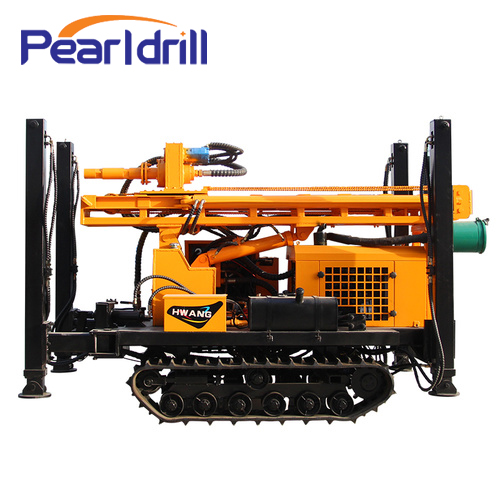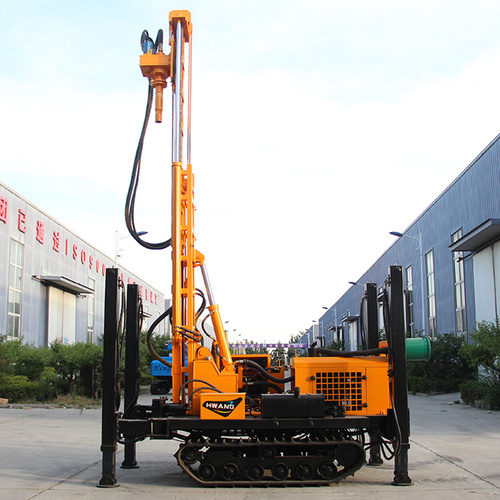Maintenance and Upkeep of DTH Drill Rigs
As an important geotechnical engineering equipment, the efficient and stable operation of down-the-hole drill rigs is inseparable from daily careful maintenance and care. Good maintenance can not only extend the life of the equipment and reduce the failure rate, but also significantly improve drilling efficiency and construction safety.

Daily Checks & Maintenance
1. Check the Drill Tools for Wear: Pay close attention to how worn the drill bit's teeth are. See if the drill rods and joints are bent or cracked, and if the hammer's piston and valves are worn. If anything looks really bad, replace it right away. You don't want to mess up your drilling or, even worse, cause an accident.
2. Clean and Lube It Up: Wipe off any dirt and mud, especially from the moving and drive parts. Make sure to grease up bearings, gears, and chains according to the manufacturer's recommendations. That keeps everything running smoothly.
3. Hydraulic System Check: See if your hydraulic fluid level is good and if there are any leaks from the hoses or connections. Make sure everything's tight. Keep that hydraulic fluid clean and change the filters regularly to stop crud from getting in and wearing out your pump and valves.
4. Air Compressor System Check: Look at your air compressor's oil level, air filter, and oilair separator. You want enough air flow and steady pressure. Don't forget to drain the water from the air tank regularly to prevent rust.
5. Electrical System Check: Check all your wires and connections to make sure they're not damaged or cracked. Ensure your gauges are working and the controls respond well.
6. Structural Parts Check: Take a look at the tracks, chassis, and drill frame for any bends, cracks, or loose bolts.
Regular Maintenance Jobs
1. Change Oils and Filters: Based on how much you've used the machine and what the manufacturer suggests, regularly change the engine oil, hydraulic fluid, gear oil, and their corresponding oil filters, hydraulic filters, and air filters.
2. Inspect and Adjust the Drive System: Check how tight your tracks are and adjust the chain tension to keep everything running smoothly.
3. Hydraulic System Test & Calibration: Periodically check the working pressure and flow of your hydraulic pump, motor, and valves. Calibrate or repair them if needed.
4. Air Compressor Deep Maintenance: Give the air compressor a full inspection, including the screw main unit, motor, and cooling system, to make sure it's performing well.
5. Specialized Drill Tool Maintenance: Take apart the hammer to clean, inspect, and replace worn parts to keep its impact efficiency high. Get your drill rods inspected for cracks to prevent them from breaking due to fatigue.
6. Full Fastener Check: Go through all the bolts and nuts on the whole machine and tighten them up. Vibrations can loosen them.

Common Issues & How to Fix Them
1. Slow Drilling or No Progress:
Why it happens: Wornout drill bit, faulty hammer, not enough air, wrong drilling pressure or RPM, or really hard ground.
Fix it: Replace the drill bit, check and repair the hammer, inspect the air compressor and adjust air supply, adjust drilling pressure and RPM, or change drilling parameters based on the ground.
2. Stuck or Buried Drill Bit:
Why it happens: Cuttings not clearing well, borehole walls collapsing, wrong drill tool for the job, or improper operation.
Fix it: Increase the air flow for clearing cuttings, adjust drilling parameters, use special tools to free it if necessary, and pay more attention to the ground conditions.
3. Strange Noises or Excessive Vibration:
Why it happens: Loose parts, worn bearings, damaged gears, or issues with the hydraulic or air compressor system.
Fix it: Check and tighten loose parts, replace worn bearings and gears, check hydraulic system pressure and flow, and troubleshoot the air compressor.
4. Overheating Hydraulic System:
Why it happens: Low hydraulic fluid, clogged radiator, worn hydraulic pump or valves, or system overload.
Fix it: Add hydraulic fluid, clean the radiator, check and repair the hydraulic pump and valves, and avoid continuous heavyduty work.
If you are interested in learning more, please click here to chat with us. We will be happy to answer any questions you may have.
DTH Drilling Rig

